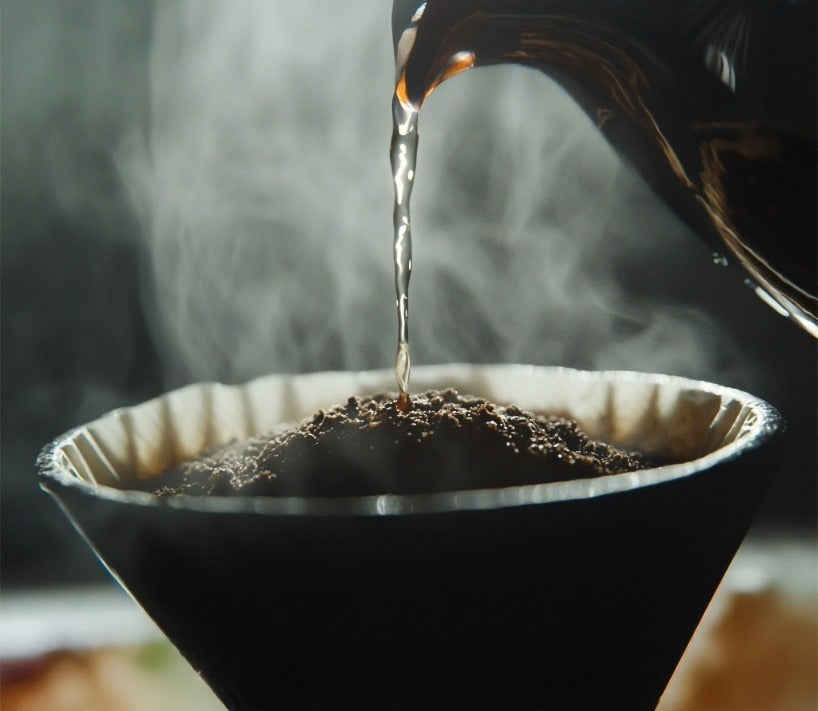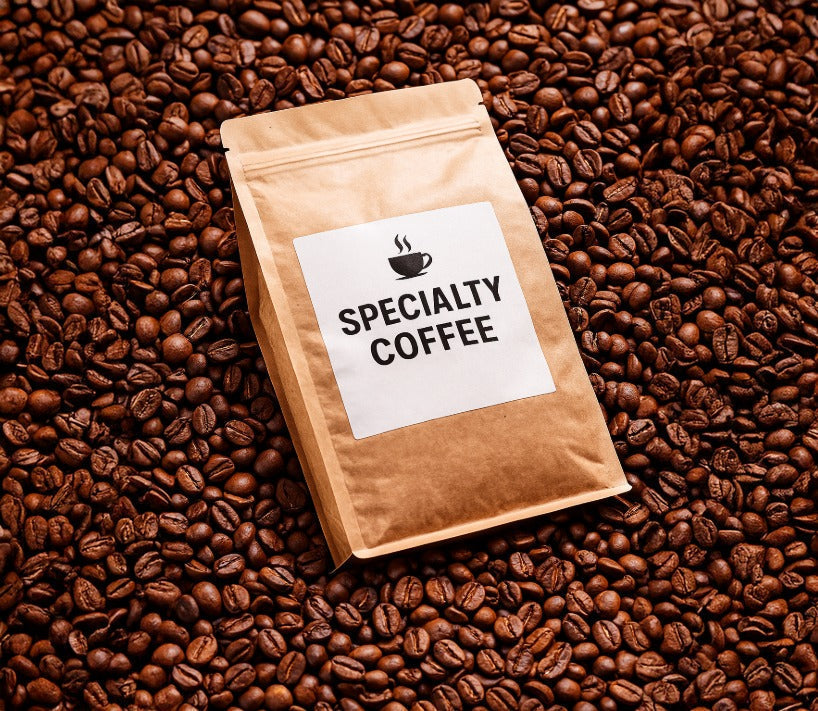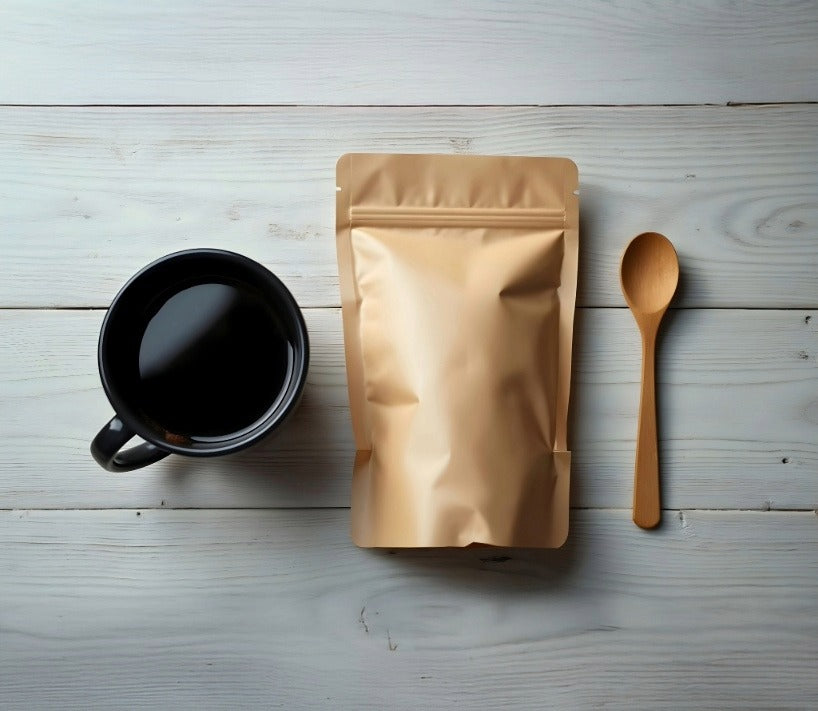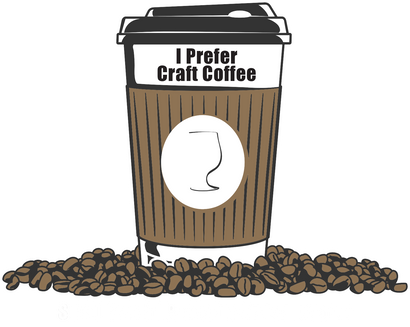Best Small Batch Coffee Sticker Shock
May 12, 2025 5 min read
Sticker Shock or Liquid Gold? Why High‑Scoring Specialty Coffee Looks Pricey (But Actually Isn’t)
“Wait, How Much for a Bag of Beans?!”
Picture this: you’re scrolling through your favorite best coffee to buy online list, jazzed to upgrade your morning ritual, when you spot a 12‑ounce bag of micro‑lot beans with a price tag that makes your eyebrow do that cartoon arch. “Twelve bucks? Twenty‑five? For coffee?” you whisper‑shout at your laptop, half expecting a coupon fairy to flutter down.
I get it—your inner accountant is clutching its pearls. But before you flee to the bargain shelf, let me spill the (coffee) beans: most folks assume specialty coffee roasters are printing money in the back room. Spoiler alert—we’re not. The truth is we’re surfing a giant wave of labor, logistics, and Mother Nature just to keep those high‑scoring beans tasting like liquid velvet.
So, grab your mug and settle in. I’m about to show you why the price of truly excellent coffee isn’t a marketing scam—it’s an honest reflection of a tiny, precious crop and the obsessive work required to make it sing in your cup.
Demystifying the Price Tag
1. Coffee Has a Report Card (and Most People Have Never Seen It)
Think back to school: 100 points was perfection, 85 was “call Grandma, I aced it,” and anything under 80 lived in the land of “meh.” Coffee works the same way. Professional Q‑graders score beans on aroma, flavor, acidity, body, and overall sparkle. Anything 80/100 or higher becomes “specialty.”
Most casual drinkers (and ticket‑taker coffee brands) never mention this scale—so they sell commodity beans without telling you. But I’m a nerd for details, so I only source coffees that hit 85+ (“Excellent”). That’s like recruiting only valedictorians for your study group. Naturally, those honor‑roll beans cost more because they’re rarer and demand more careful handling.
2. Small Yields, Big Flavor—Supply & Demand in a Nutshell
Global coffee production is a vast ocean, yet high‑scoring beans occupy a kiddie‑pool corner—roughly 5 percent of the total crop. Imagine an orchard where only the juiciest, ripest apples get picked by hand, sorted three times, then boxed separately. That’s specialty coffee in a nutshell: fewer cherries make the cut, so each pound commands a premium.
When you surf the web asking “where can I buy fresh coffee beans near me” or hunting for the best small batch coffee, you’re tapping into that razor‑thin supply. It’s not hype; it’s basic economics—high quality, low volume, higher price.
3. A Labor‑of‑Love Supply Chain
From seedling to your doorstep, each step screams artisanal hustle:
| Stage | What Happens | Why Costs Rise |
|---|---|---|
| Selective Picking | Skilled pickers harvest cherries only at peak ripeness (imagine berry sommeliers). | Requires multiple passes, more labor hours. |
| Meticulous Processing | Washed, honey, or natural methods—each adds water, fermentation tanks, or patio space. | Extra equipment + time. |
| Grading & Sorting | Optical scanners, gravity tables, and human eyes weed out defects. | Higher tech + specialized staff. |
| Micro‑Roasting | Small 15‑kg batches roasted to highlight origin flavor (not hide flaws). | Efficiency drops, but flavor skyrockets. |
| Fast Shipping | Many roasters (hi, that’s me) ship the same day orders hit before noon EST. | Freshness couriered to your door = added logistics. |
Add it up and you’ve got a bean that’s held more hands than a rock star crowd‑surfing—every touchpoint protecting quality.
4. Nature’s Curveballs (a.k.a. Climate, Pests & Pandemics)
Coffee is a tropical diva. Too much rain? Flavor dilution. Too little? Stunted growth. A sudden frost in Brazil or leaf‑rust outbreak in Colombia can wipe out acres overnight. When yields fall, the limited volume of top coffee delivered shrinks even further, nudging prices north.
Then there’s climate adaptation: shade‑tree planting, disease‑resistant varietals, water‑saving mills—all crucial but costly investments borne by farmers and, eventually, your wallet. Supporting those measures is how we ensure a future supply of best craft coffee online.
5. From “Too Expensive” to “Best‑Value Beverage in the House”
Let’s do quick math: a 12‑ounce bag costs $27 and brews roughly 20 six‑ounce cups. That’s $1.35 per cup—cheaper than a vending‑machine soda and light‑years tastier. If you sprang for the best espresso beans and pull doubles, you’re still under $2 a shot. Specialty coffee might look pricey on the shelf, but ounce‑for‑ounce it’s the most affordable luxury you can drink daily (besides tap water, maybe).
6. Quality = Consistency = Zero Guesswork
Ever bought a supermarket “Colombian Supremo,” brewed it, and wondered why it tasted like cardboard? That’s inconsistency—blends changing with each coffee futures contract. High‑scoring specialty beans are cupped repeatedly to maintain flavor fidelity year‑round. So whether you love fruity Kenyan pour‑overs or a good coffee to drink black from Guatemala, you get what you expect every time. That consistency is part of the price—no bitter surprises.
7. But I’m Not a Connoisseur—Isn’t This Wasted on Me?
Not at all! In fact, specialty beans are often hailed as the best coffee for non coffee drinkers precisely because they’re smoother, less bitter, and naturally sweet. If you typically drown your cup in syrupy creamer, try a lightly roasted Ethiopian that tastes like blueberry compote—you’ll be amazed. Want an impressive gift for coffee lover friends? High‑scoring beans are essentially bragging rights in a bag. (Bonus: “coffee beans as a gift” ship easier than wine.)
8. How to Spot Real Quality (Without a Scouting Degree)
Look for three clues on any bag or product page:
-
Roast Date — Fresh equals flavor. If it’s older than three weeks, skip it.
-
Score or Cupping Notes — Reputable sellers share the grade (e.g., 87 points) or flavor wheel descriptors.
-
Transparency — Farm name, elevation, processing method. More detail usually signals real sourcing, not marketing fluff.
If you see vague terms like “premium gourmet dark roast,” proceed with caution. But if a roaster lists varietal (“Bourbon, Typica”), region (Huila, Colombia), and score (86.5)—that’s authenticity you can Google.
9. Why Paying More Is an Ethical Win
Specialty coffee farmers earn significantly higher prices per pound, which means:
-
Living Wages & incentives to stay in coffee, rather than switch to higher‑paying but less sustainable crops.
-
Investment in Quality—better milling equipment, agronomy training, and environmental stewardship.
-
Community Development—schools, healthcare, and infrastructure in rural regions.
By opting to buy specialty coffee online, you close the loop: your morning cappuccino funds tangible positive impact thousands of miles away. That’s a feel‑good story no drive‑thru latte can match.
The Perks (Pun Intended) of Knowing the Truth
What You Gain When the Sticker Shock Wears Off
-
Predictable Joy
Every sip bursts with origin character—think red berries, chocolate fudge, or honey florals. Boredom? Never met her. -
Barista‑Level Brew at Home
With best tasting whole bean coffee in the grinder and a basic pour‑over setup, you’ll out‑shine most cafés—at a fraction of daily drink‑out costs. -
Conversation Currency
Bring a bag of Ethiopian Gelana Abaya to a dinner party and casually mention its 87.75 score. Voilà—instant coffee hero status. -
Personal Concierge (That’s Me!)
Still unsure if you prefer a honey‑processed Costa Rican or a washed Kenyan? Shoot me an email, text, or Instagram DM. I genuinely love geeking out over flavor profiles and dialing in your perfect cup—no snobbery, just caffeinated enthusiasm.
Final Pour‑Over Thoughts
Yes, a bag of high‑scoring beans costs more up front. But once you understand the grading system, limited supply, labor intensity, and ethical premiums baked into each pound, the price suddenly feels, well…logical. In return, you get consistent, vibrant flavor that wakes you up and makes you feel like a conscientious citizen of planet Earth.
So next time you stumble on that seemingly steep price while chasing the best coffee online, remember: you’re not paying for fancy packaging; you’re supporting an entire aroma‑packed ecosystem of growers, graders, and roasters who refuse to compromise on quality.
And hey, if you’re still scratching your head, I’m an inbox away. Let’s have a coffee conversation—no gatekeeping, just great beans and good vibes. Cheers to brewing better mornings, one excellent cup at a time!
Also in Best Coffee To Buy Online Education

Biggest Coffee Brewing Mistake At Home
December 03, 2025 4 min read
Learn why tap water ruins your coffee and how filtered water, fresh beans, and simple steps unlock the best tasting craft coffee at home.

How To Spot Fake Specialty Coffee Fast
December 02, 2025 4 min read
Learn the simple 10-second trick to avoid fake specialty coffee and buy real, fresh beans every time. It's the one simple trick to the best tasting craft coffee at home.

Freshest Craft Coffee Online at Home: High-Scoring Coffee Beans
December 01, 2025 4 min read
But high-scoring, fresh roasted coffee beans online? They take all the guesswork out of finding coffee you love. And since I roast with clean hot air, you only need to wait 2–5 days after roast date for perfect flavor. Zero smokiness. Zero staleness. Just clean, bright, sweet coffee.
